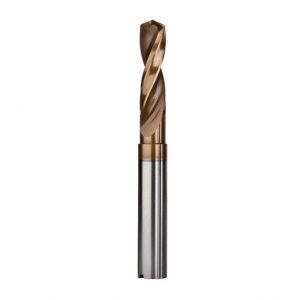The company has announced that its high performance alumina coating, the tiger – silver coating, has improved its milling and steering production efficiency, and can now use its XC insert bit. It can improve production efficiency, improve process reliability and reduce machining cost.

The new coating combines high temperature wear resistance and excellent toughness. This combination is desirable in any application, especially in drilling. In drilling, the cut must be able to withstand relatively high cutting speed and outer edge force, but when a center is close to the drill, these speed and strength will weaken. In order to adapt to the different and complicated processing conditions, a cutting tool material is needed to make it resistant to high temperature and wear-resistant.
The property’s heat resistance features improved productivity by allowing higher speeds, while its toughness improved the reliability of processes, which both helped lengthen knife life and reduced processing costs.
The new coating has several insertion material. For example, the cutting material HGT25 and HGT35S apply to all cast iron and steel materials. Extreme toughness in the center of the drill if required, as in the processing of different phosphorus, m or butyl material often occur, company has a cutting tool material FGP40 PVD coating center as a substitute material indexable inserts. This cutting material is designed for maximum toughness and ensures the reliability of the best process.
The company released its first indexable insert, using a new tiger-silver aluminum oxide coating. Due to the advanced performance of the new coating, these indexable grooves and cut-off pages provide superior tool life and improve productivity. These features include improved resistance to high temperature resistance and no compromise on toughness.
The combination of toughness and abrasion is an advantage in any application, especially in slot and cut-off operations because the tool experienced several different conditions during the cutting process. For example, at the beginning of the cutting, the tool will be exposed to a large amount of coolant, with little or no follow-up. Similarly, in the early stages of cutting, the speed is slower, the speed is slower, the early tool pressure is small, at the end of the cutting, the pressure is very high.